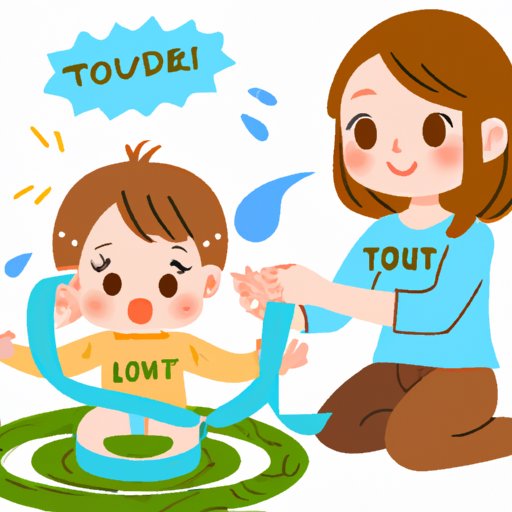
Introduction
Potty training is an important milestone in a child’s life and it can be overwhelming for parents to determine the right time to start. Knowing when to start potty training is important to ensure success and avoid unnecessary stress and frustration. In this article, we will cover the signs of readiness, the advantages and disadvantages of early and late potty training, common mistakes parents make, how to understand your child’s personality, and creative ways to make potty training a positive experience.
A Guide to Determine If Your Child is Ready for Potty Training
The first step in potty training is determining if your child is ready. Some signs of readiness include showing interest in the toilet, being able to communicate their needs, and having regular bowel movements. Parents can assess their child’s readiness by observing their behavior and consulting with their pediatrician. It’s important to remember that every child is different and may be ready at different times.
The Benefits and Drawbacks of Early versus Late Potty Training
Parents may wonder if they should start potty training their child early or wait until later. Early potty training (before age 2) has benefits such as early development of bladder control and avoiding the cost of diapers. However, it can also have drawbacks such as increased stress and frustration for parents and child. Late potty training (after age 2) may allow the child to be more independent and have better bladder control, but it can also require a longer period of transition.
Common Mistakes Parents Make During Potty Training and How to Avoid Them
Parents can make common mistakes during potty training, such as starting too early, creating negative associations with toilets, and pressuring their child. To avoid these mistakes, parents can wait until their child shows signs of readiness, use a positive and encouraging tone, and avoid punishments or negative reinforcement.
Understanding Your Child’s Personality and How It Affects Potty Training
Children have different personalities that can impact their readiness for potty training. For example, a stubborn child may resist potty training, while an anxious child may have a harder time transitioning. Parents can adapt to their child’s personality by giving them more control, using positive reinforcement, and being patient.
Creative and Fun Ways to Make Potty Training a Positive Experience for Your Child
Parents can make potty training a fun and positive experience by using creative strategies. Ideas include using colorful stickers, books, or songs to encourage your child, celebrating their successes, and making potty training a special and exciting experience.
Conclusion
Potty training is a unique journey for each child and their family and there is no one-size-fits-all approach. By paying attention to your child’s readiness, using positive and encouraging strategies, and being patient, you can make potty training a positive and stress-free experience for you and your child. Remember that mistakes may happen, but with consistency and perseverance, your child will eventually learn to use the potty independently.





